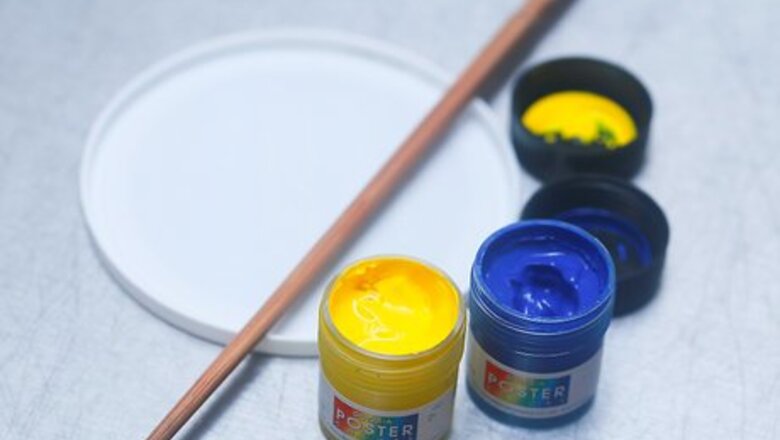
views
Mixing Basic Green Paint
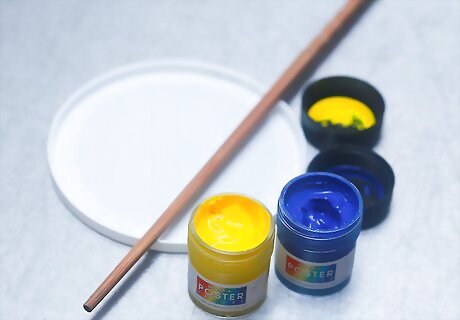
Gather your supplies. Many people will reach directly for a paintbrush when mixing paint, but this isn't always the best option. Not only can you risk ruining your paintbrush, but you won't get as smooth of a color. Opt for a palette knife or popsicle stick instead. Here is a complete list of what you will need: • Blue paint • Yellow paint • Paint palette, paper plate, or cup • Something to mix with (palette knife, spoon, popsicle stick, etc)

Put a coin-sized drop of yellow paint onto a palette. This will count as "one part yellow." When mixing paints, you work with "parts" as a form of measurement. If you don’t have a paint palette, use a paper plate to mix your paints on.

Add a drop of blue paint. To make a basic, classic shade of green, professional painter Jeanine Hattas Wilson recommends mixing equal parts of blue and yellow. So, add the same coin-sized amount of blue paint next to the yellow paint on your palette.

Mix the blue and yellow paint together. Keep mixing the paint until the color is uniform and there aren’t any streaks. If you use thin paint (like tempera, poster, or craft-grade acrylic paint), try using a spoon or popsicle stick. If you use a thicker, paste-like paint (such as oil or acrylic), use a palette knife to smoosh and move the paint around until you get an even color.
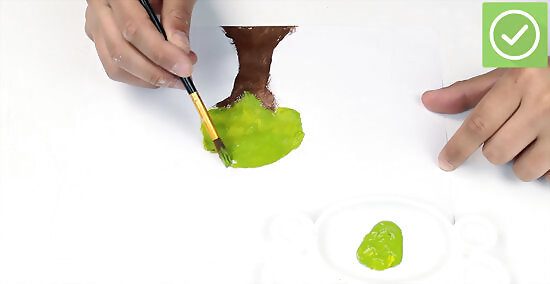
Use the paint. Once the paint is mixed and you’re satisfied with the color, creative liberty is yours! You could create a scenic landscape with your green paint or use the green to mix realistic skin tones. The possibilities are endless!
Creating Different Shades of Green
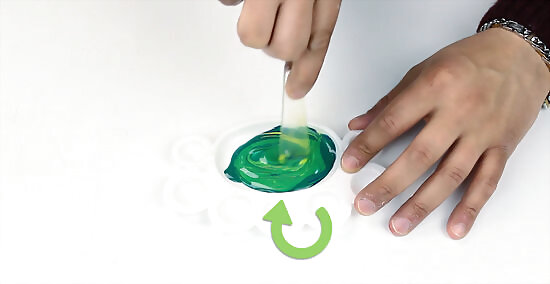
Add more yellow for a lighter, brighter green. Start with one part yellow and one part blue, and mix the two colors together with a palette knife. Once you have your green, add one extra part of yellow and mix again. Keep adding yellow until you get the shade you want. Two to three parts yellow and one part blue will give you a bright, lime green.
Add some white for a lighter, pastel green. Jeanine Hattas Wilson recommends adding white to create a mintier green. Simply mix together a shade of green you like, and then slowly add in white until you’re satisfied. Keep in mind that some whites can be more vibrant than others—less is sometimes more.
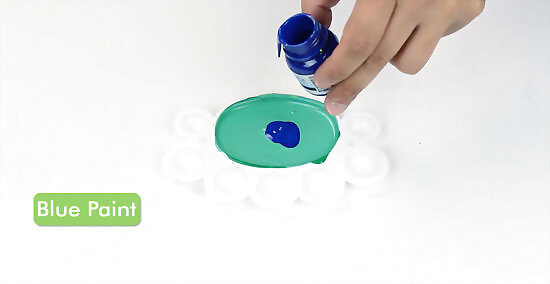
Darken your green paint by adding in more blue. Start with a basic green color, then mix in one extra part of blue. Keep adding blue paint until you get the color you want. Two parts blue and one part yellow will give you turquoise.
Add black if you want a darker, duller shade of green. Professional painter Jeanine Hattas Wilson suggests adding black little by little to make green paint darker. Keep adding black paint, drop by drop, and mixing until you get the color you want. Remember that black doesn’t brighten the tone of paint but rather dulls it. For instance, adding black to green will make a forest green rather than cyan or seafoam.
Add a little red to reduce the vibrancy of green paint. If you want more of an olive green or an army green, add a drop of red. As Jeanine Hattas Wilson explains, the more red you add, the more earthy your shade of green will be.
Mixing Green Using Artist-Grade Paint

Pay attention to the different shades of artist-grade blue and yellow paints. When buying artist-grade acrylic, oil, or watercolor paint, look at the colors carefully. You may notice that some of the blues have more of a greenish tint, while others have more of a purple tint. Along with this, some of the yellows have more of a green tint, while others have more of an orange tint. Choosing the wrong shade of blue or yellow could result in a murky, muddy green.

Use shades of blue and yellow that will create the green you want. To get a bright, vibrant green, buy blue and yellow paints with a greenish tint. Here are some combinations to get you started: Phthalo blue (Green Shade) and Cadmium yellow light Phthalo blue (Green) & Hansa yellow (also called Lemon yellow)

Experiment with other shades when you're mixing a muted green. If you don't want a bright green, use other shades of blue and yellow. Check out these possible combinations: Ultramarine blue & Cadmium yellow light Ultramarine blue & Yellow ochre Ivory black & Cadmium yellow light Prussian blue & Yellow ochre Burnt umber & Cadmium yellow light
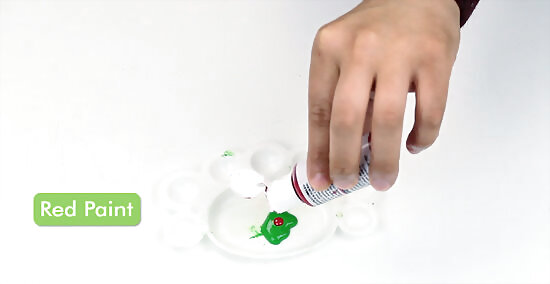
Use a touch of red to tone down green. If your green turns out too bright, don't add black or gray to make it duller. Instead, add a little bit of red paint. Red is the opposite of green on the color wheel, so it will help tone down the green and make it less bright. The more red you add, the more brown/gray your green will be.
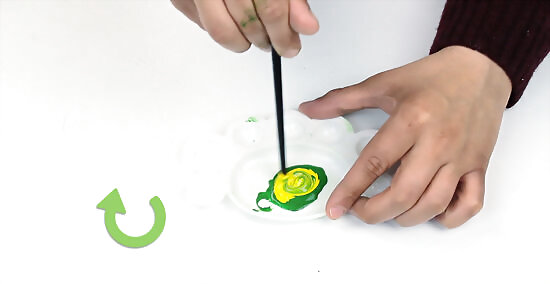
Lighten or darken a vibrant green with some yellow or blue paint. Avoid using white or black paint; these colors will dull your green. Instead, use a little bit of the yellow. To darken the green, use a small amount of blue. Using yellow and blue will help keep the green bright and vibrant without dulling it down. Blue can be a very intense color. Start with a pinhead-sized drop, mix, and add more from there.

Lighten or darken to a muted green by adding black or white paint. If you want to lighten your green to a pastel shade, add some white. If you want to darken your green to a more dull shade, add a bit of black. Start with a pinhead-sized drop. Remember, less is sometimes more.

















Comments
0 comment